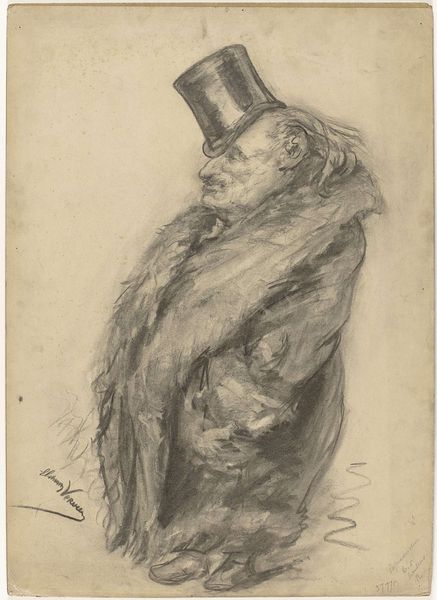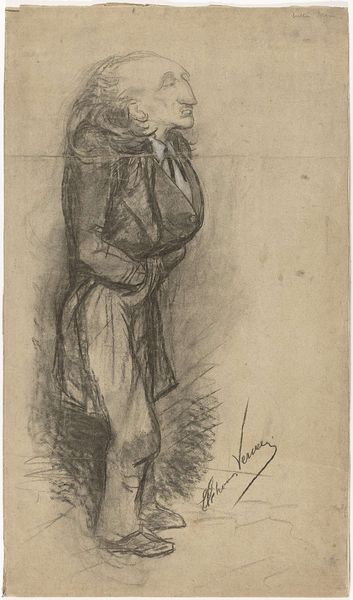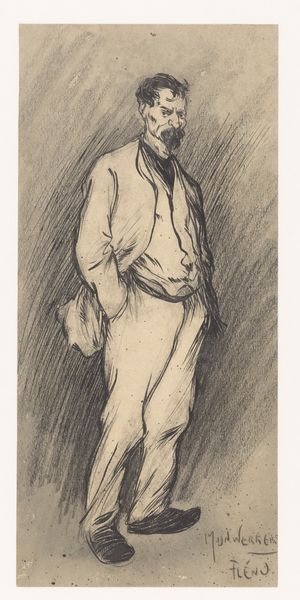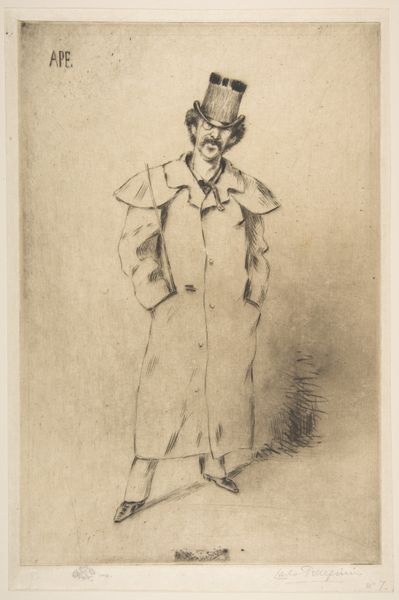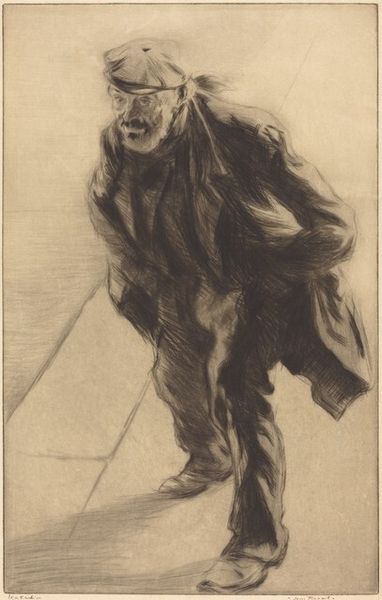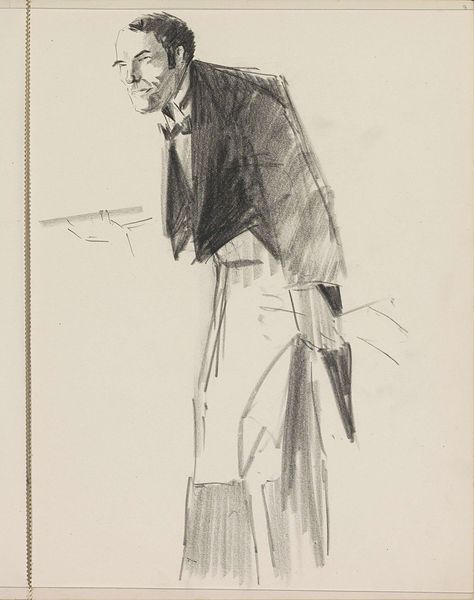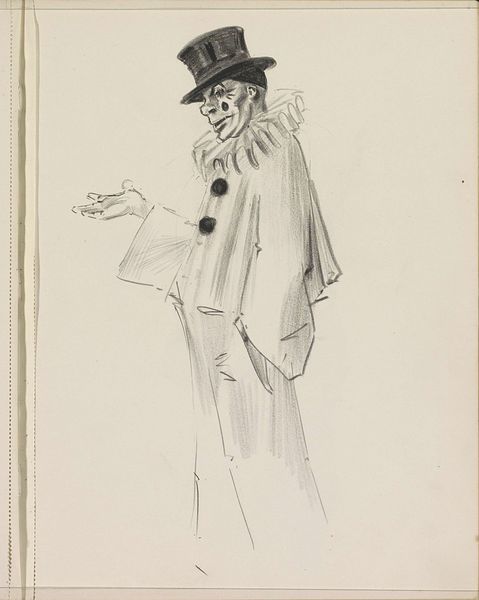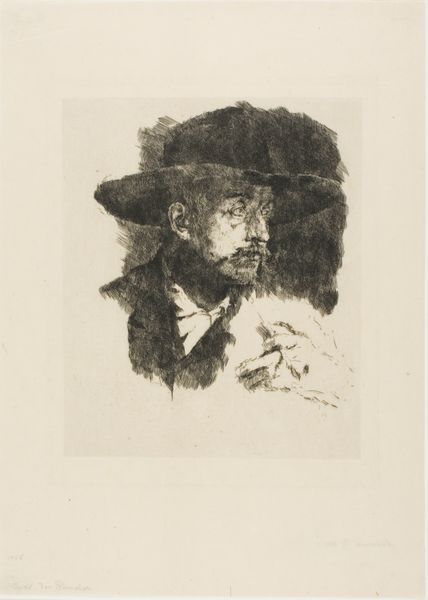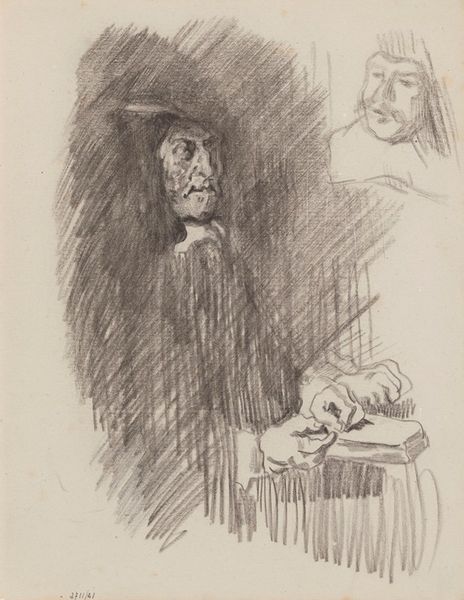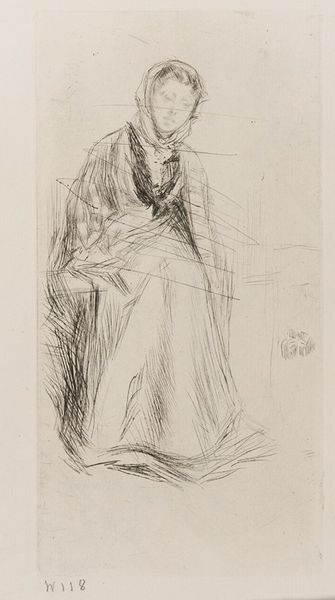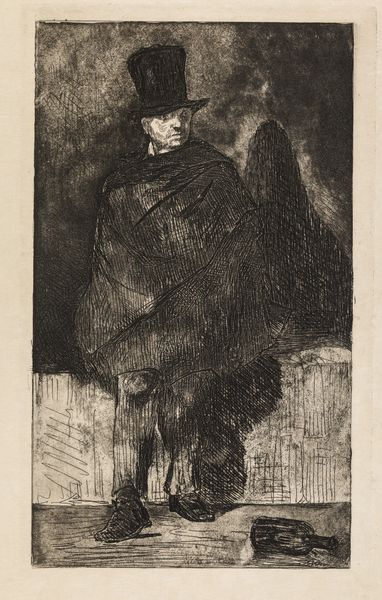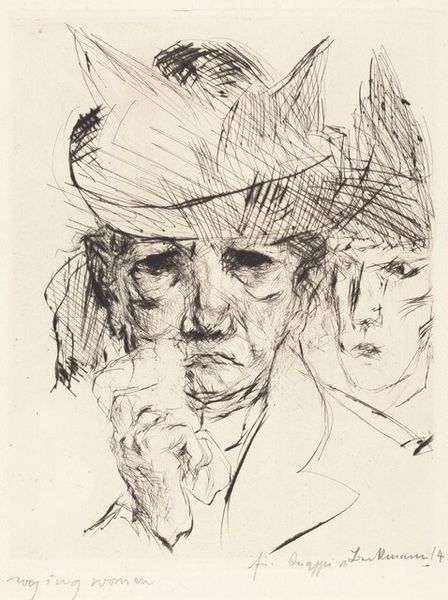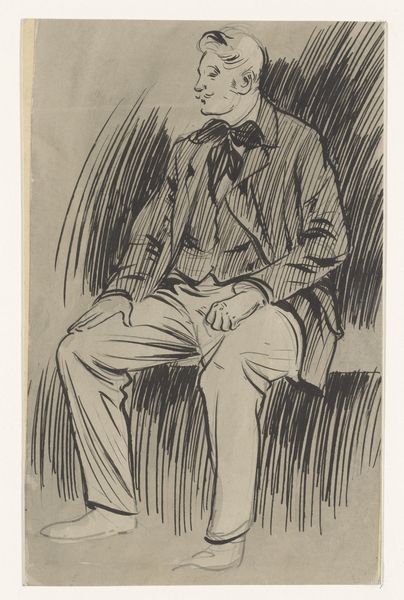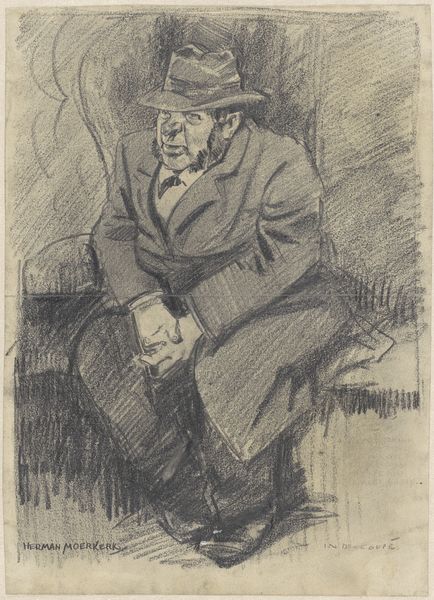
drawing, charcoal
#
portrait
#
drawing
#
caricature
#
charcoal drawing
#
figuration
#
charcoal art
#
19th century
#
portrait drawing
#
charcoal
#
academic-art
Dimensions: height 485 mm, width 328 mm
Copyright: Rijks Museum: Open Domain
Curator: I'm immediately drawn in by the intense emotionality conveyed in this image, especially within those wide, perhaps frightened eyes. Editor: And that’s appropriate given this caricature, rendered in charcoal by Elchanon Verveer, somewhere between 1850 and 1899. It’s titled "Karikatuurportret van Jan Gerard Smits," currently held in the Rijksmuseum collection. The exaggeration seems pointed, almost cruel. Curator: But isn't that the point of caricature? To hold a mirror to society, to magnify traits we might prefer to ignore? The man's fragility, almost doll-like appearance—the disproportionate limbs and worried eyes, emphasize vulnerability in an era of rapid social change and industrial anxiety. He's draped in finery, yet appears almost swallowed by it, suggesting societal pressures weighing down on the individual. Editor: Absolutely, and thinking intersectionally, what narratives of class and masculinity are we seeing? The fur coat signifies wealth, but the hunched posture undermines a conventional presentation of masculine power. Perhaps we are invited to question performative identities—how men of a certain social standing were expected to behave, and the anxieties underlying those expectations. This challenges simple readings of status, pushing us to see the man’s vulnerability as possibly a subtle form of resistance. Curator: And the choice of charcoal only strengthens that impression. The soft, almost smudged lines make the whole figure seem transient. Consider the enduring nature of caricature through history – Daumier, Gillray - using exaggerated images as weapons against political complacency, echoing themes of justice and equality in modern political theory. Verveer's caricature touches this thread by subtly unsettling social structures through visual distortion. Editor: That resonates. He becomes less an individual portrait and more a symbolic representation of unease. By undermining traditional displays of masculinity and highlighting vulnerability, Verveer taps into the period’s changing definitions of social power. The caricature’s timeless quality rests in its challenge to normative perceptions of social identity. Curator: Indeed, art often unveils more when we probe beyond mere aesthetics and into its reflections on culture. The distorted image stays lodged in the mind's eye, far beyond the canvas itself, as if challenging the boundaries of memory and image. Editor: Right, and it becomes clear that in Verveer’s charcoal, Smits’ likeness might become a window to reflecting broadly upon themes of wealth, expectation, and personal anxiety, each charcoal line bearing cultural weight.
Comments
No comments
Be the first to comment and join the conversation on the ultimate creative platform.
